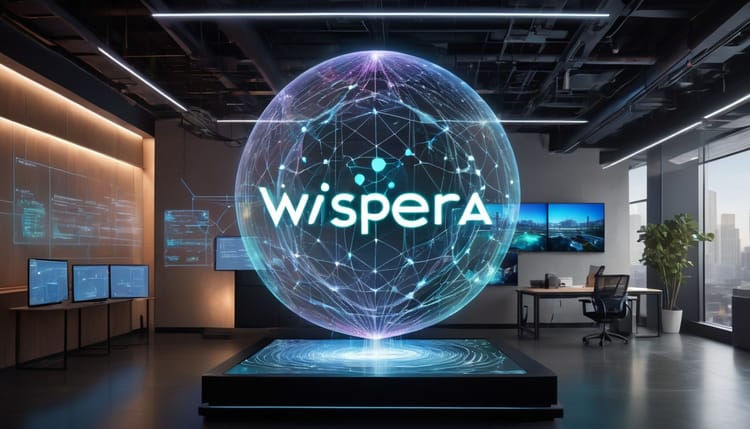Beyond Chatbots: The Technological and Societal Impact of AI Agents

Introduction
Artificial intelligence (AI) has witnessed seismic shifts in recent years, driven by notable advancements in machine learning and natural language processing. One of the most transformative developments has been the advent of conversational agents, epitomized by the success of ChatGPT. While chatbots like ChatGPT have captured the public imagination by engaging users in meaningful dialogue and providing near-human interactions, the scope of AI technology extends far beyond these applications. Enter AI agents—an evolution in AI designed to perform a wide array of tasks autonomously with minimal human intervention.
AI agents, culminating in several technological breakthroughs, possess unique capabilities that enable them to perform complex functions across diverse domains. These sophisticated systems transcend mere conversation; they sift through vast datasets, derive insights, and even make independent decisions. The emergence of AI agents signifies a significant technological milestone akin to the transition from calculators to computers—a quantum leap in capability and potential application.
This article aims to delve into the multifaceted dimensions of AI agents, examining three core themes that shape their development and deployment: technological advancements, industry impacts, and the accompanying challenges and skepticism. By exploring these themes, we hope to comprehensively understand where AI agents stand today and in the future.
First, we will explore the technological advancements driving AI agents' capabilities. We will uncover the innovations pushing these technologies forward, from sophisticated prompt engineering techniques that optimize their performance to the underlying algorithms that enable operational efficacy.
Furthermore, we will delve into the practical applications of AI agents across a spectrum of industries. We will illustrate how sectors such as healthcare, finance, and entertainment are undergoing a profound transformation due to the influence of these powerful tools. The role of AI agents in boosting efficiency, precision, and personalization underscores their increasing indispensability in contemporary business practices.
Lastly, we will confront the potential risks and challenges accompanying AI agents' rapid adoption. Ethical considerations, security vulnerabilities, and societal implications reflect the complexities and concerns that arise with any revolutionary technology. Striking a balance between AI's promise and the need for responsible governance and thoughtful regulation is crucial to ensuring that these advancements serve the greater good.
In navigating these themes, we aim to paint a holistic picture of AI agents, showcasing their potential while grounding the discussion in the realities of their implementation. As we journey beyond chatbots into AI agents' promising yet challenging realm, we invite you to explore these technologies' future with optimism and caution.
Technological Advancements
The evolution of AI agents is a testament to the rapid advancements in artificial intelligence, fueled by breakthroughs in machine learning and natural language processing. These technological strides have enabled AI agents to perform tasks that were once the domain of human experts, revolutionizing various sectors along the way. Here, we’ll explore the recent advancements that have made this revolution possible, delve into the intricacies of prompt engineering and prompt management, and highlight some innovative applications of AI agents across different industries.
Overview of Recent Advancements in AI Agents
AI agents have come a long way from simple rule-based systems to sophisticated entities capable of complex reasoning and decision-making. Modern AI agents are powered by advanced algorithms and massive datasets, allowing them to learn from vast amounts of information and adapt to new scenarios. Key advancements include:
1. Enhanced Natural Language Processing (NLP): AI agents' ability to understand, interpret, and generate human language has improved considerably. This has been driven by advanced NLP models that can comprehend context, sentiment, and even subtle nuances in conversations.
2. Machine Learning Models: The development of more advanced machine learning models, including deep learning and reinforcement learning, has significantly boosted the capabilities of AI agents. These models enable agents to recognize patterns, predict outcomes, and make decisions with a high degree of accuracy.
3. Integration of Multimodal Data: AI agents can now process and analyze data from multiple sources, including text, images, and audio. This multimodal approach allows for more prosperous, more contextual understanding and interaction.
4. Autonomous Learning: Autonomous learning technologies allow AI agents to learn and adapt without explicit programming. This self-improving capability is crucial for applications that require continuous adaptation to new data and environments.
Discussion of Prompt Engineering and Prompt Management
Prompt engineering and prompt management are central to the effective functioning of AI agents. These disciplines focus on optimizing the inputs that guide AI behavior and outputs.
Prompt Engineering involves crafting precise and effective prompts that elicit desired responses from AI agents. The structure and wording of prompts can significantly impact the performance of the AI, making prompt engineering a critical skill for developers. For example, specifying a clear persona in the prompt, such as "You are LegalAdvisorGPT, an expert legal advisor," can guide the AI to provide more relevant and accurate legal advice. This precision helps ensure that the responses align with the intended application, whether advising on a legal matter or drafting contracts.
Prompt Management encompasses the strategies and tools to organize, refine, and regulate prompts. This includes developing structured templates that ensure consistency and using automated systems to review and optimize prompts before deployment. Organizations often implement prompt management systems to align AI interactions with their goals, mitigate risks, and maintain compliance with internal policies and regulations. For instance, a prompt management tool might include predefined templates that reflect the company's mission and values, ensuring all AI-driven interactions adhere to these principles.
Examples of Innovative AI Applications in Various Sectors
The impact of AI agents is already being felt across diverse sectors, from legal to finance and entertainment. Here are some notable examples of how these technologies are being applied innovatively.
1. Legal:
AI agents are transforming the legal field by assisting in legal research, contract analysis, and due diligence. AI-powered legal research tools can swiftly scan through vast case law and legal text databases to find relevant information, significantly reducing the time and effort required for manual research. In contract analysis, AI agents can identify key clauses, detect inconsistencies, and suggest revisions to ensure compliance and mitigate risks. This automation enhances efficiency and accuracy, allowing legal professionals to focus on more complex, high-value tasks.
2. Finance:
AI agents are critical in fraud detection and prevention in the financial sector. Machine learning algorithms analyze transaction patterns to identify suspicious activities, enabling financial institutions to respond swiftly to potential threats. Furthermore, AI agents are integral to algorithmic trading, which processes vast amounts of market data to execute trades with optimal timing and strategy, enhancing investment returns.
3. Entertainment:
The entertainment industry leverages AI agents to create more immersive and personalized experiences. For instance, AI-driven content recommendation systems analyze user preferences and behaviors to suggest movies, music, and games tailored to individual tastes. In video game development, AI agents generate realistic characters and scenarios, enhancing the player experience with dynamic and responsive interactions.
4. Customer Service:
AI agents are transforming customer service by providing instant, around-the-clock support. Advanced chatbots and virtual assistants handle customer inquiries, resolve issues, and offer personalized recommendations, significantly improving customer satisfaction and operational efficiency.
5. Manufacturing:
AI agents optimize manufacturing processes by monitoring equipment performance, predicting maintenance needs, and automating quality control. This reduces downtime, enhances product quality, and lowers operational costs.
The advancements in AI technology have unlocked immense potential for AI agents, allowing them to perform tasks with higher accuracy, efficiency, and adaptability than ever before. As we continue to innovate and refine these systems, AI agents will undoubtedly play an increasingly central role in shaping the future of various industries.
Challenges and Skepticism
As AI agents push the boundaries of technological capabilities, their rapid adoption has its challenges. From practical implementation challenges to broader ethical concerns, the rise of AI agents is met with both excitement and caution. This section delves into the common challenges faced during the widespread adoption of AI agents, highlights skepticism from industry experts, and discusses the pressing ethical considerations necessitating robust regulatory frameworks.
Examination of Common Challenges in the Rapid Adoption of AI Agents
The integration of AI agents into various industries presents several practical challenges that must be navigated for successful implementation:
1. Data Quality and Availability:
The performance of AI agents heavily relies on the quality and volume of data they are trained on. Ensuring this data is accurate, representative, and free from biases is a significant challenge. Poor data quality can lead to erroneous outputs, undermining the reliability and effectiveness of AI agents.
2. Integration with Existing Systems:
Integrating AI agents with existing organizational systems and workflows can take time and effort. This involves technical compatibility and ensuring that AI-driven processes complement and enhance human tasks rather than disrupt them. Temporary inefficiencies and resistance from employees accustomed to traditional methods may also arise.
3. Scalability and Maintenance:
A critical challenge is scaling AI solutions to handle larger volumes and more complex tasks while maintaining performance. Additionally, AI systems require ongoing maintenance to update models, incorporate new data, and address evolving needs. This necessitates continuous investment and the management of skilled personnel.
4. Economic Costs:
AI agents' development, deployment, and maintenance entail substantial economic costs. High initial investments in technology and skilled personnel can be daunting for smaller organizations. There may also be unforeseen costs related to system failures or the need for frequent updates.
Skepticism from Industry Experts and Potential Risks
While the potential of AI agents is immense, industry experts often express skepticism and caution regarding their adoption. These concerns primarily revolve around security, reliability, and the broader implications of deploying AI on a large scale:
1. Security Risks:
AI agents pose significant security risks, primarily because they process and store vast amounts of sensitive data, making them attractive targets for cyberattacks. AI systems can lead to data breaches if compromised, resulting in substantial financial and reputational damage. Ensuring robust cybersecurity measures and continuous monitoring is critical.
2. Reliability and Accountability:
The decision-making processes of AI agents can sometimes be opaque, leading to concerns about reliability and accountability. In cases where AI systems make incorrect or biased decisions, pinpointing the source of error can complicate accountability. This raises critical questions about liability, especially in sectors like legal and finance, where decisions have significant ramifications.
3. Job Displacement:
AI agents' automation capabilities elicit fear of job displacement among the workforce. While AI can augment human capabilities, there is a tangible risk of reducing the need for specific roles. This necessitates a proactive approach from policymakers and industry leaders to reskill and upskill the workforce, ensuring that employees can transition to new opportunities created by AI advancements.
Discussion of Ethical Considerations and the Need for Regulations
The ethical considerations surrounding AI agents are integral to their responsible development and deployment. Addressing these ethical concerns through regulations is essential to ensure that AI technologies benefit society as a whole:
1. Bias and Fairness:
AI agents must operate fairly and without bias, especially in critical applications like legal advice or hiring processes. However, AI systems can inadvertently learn and perpetuate biases in their training data. Fairness requires rigorous testing, transparency in AI model development, and ongoing audits to identify and mitigate bias.
2. Privacy and Consent:
AI agents often handle sensitive personal information. Protecting user privacy and securing explicit consent before data collection and processing is paramount. Regulations like the General Data Protection Regulation (GDPR) in Europe set important precedents, but continuous efforts are needed to enhance privacy safeguards globally.
3. Transparency and Explainability:
AI systems must be transparent and explainable, especially when their decisions impact individuals’ lives and livelihoods. Users should clearly understand how AI agents arrive at their conclusions. Implementing explainable AI (XAI) techniques can help demystify AI decision-making processes, fostering trust and acceptance.
4. Ethical AI Development:
The development of AI agents should adhere to ethical guidelines prioritizing human well-being, accountability, and societal benefit. Ethical AI frameworks, like those proposed by various international organizations, provide guidelines but must be reinforced by enforceable regulations to be effective.
5. Legal and Regulatory Frameworks:
Developing comprehensive legal and regulatory frameworks is crucial to address the multifaceted challenges posed by AI agents. Regulations should cover data protection, transparency, accountability, and ethical use of AI. Collaboration between governments, industry, and academia is necessary to create standards that keep pace with technological advancements, ensuring that AI adoption progresses responsibly.
Conclusion
The journey through the rise and integration of AI agents has revealed a landscape rich with potential yet fraught with challenges. As we stand at the crossroads of technological innovation and societal impact, we must carefully weigh the benefits and pitfalls of AI agents.
A balanced approach to development and adoption is essential to harness the full potential of AI agents while mitigating their pitfalls. Here are strategic actions for stakeholders:
1. Foster Collaboration Across Sectors:
Policymakers, industry leaders, technologists, and academics must collaborate to create standards and best practices for AI development and deployment. Multi-stakeholder engagement ensures diverse perspectives and expertise contribute to responsible AI ecosystems.
2. Invest in Continuous Learning and Reskilling:
Organizations should invest in training programs that equip employees with skills to thrive in an AI-augmented workplace. This includes technical skills related to AI usage and soft skills that leverage human emotional intelligence and creativity.
3. Prioritize Ethical AI Development:
Adhering to ethical principles and guidelines during AI development is crucial. Implementing transparency measures, addressing biases, and ensuring accountability can build trust and acceptance among users and stakeholders.
4. Implement Robust Regulatory Frameworks:
Governments and regulatory bodies must develop and enforce comprehensive legal frameworks that govern AI usage. Regulations should address data protection, privacy, ethical considerations, and accountability to ensure responsible AI deployment.
5. Promote Innovation While Addressing Risks:
Balancing innovation with risk management is critical. Encouraging experimentation and innovation in AI development should go hand-in-hand with proactive measures to address potential risks. Establishing oversight mechanisms and safety nets can mitigate adverse impacts.
6. Engage in Public Dialogue:
Transparent communication with the public about AI agents' capabilities, limitations, and impacts is vital. Engaging in open dialogues fosters understanding, addresses concerns, and garners support for responsible AI initiatives.
In conclusion, AI agents represent a transformative force with the potential to revolutionize industries and enhance productivity and efficiency. However, their integration also poses significant challenges that must be navigated thoughtfully. By embracing a balanced approach that prioritizes ethical considerations, regulatory compliance, and continuous learning, we can ensure that AI agents contribute positively to society. As we advance, collective responsibility and proactive strategies will pave the way for a future where AI agents augment human potential and drive sustainable growth and innovation.



